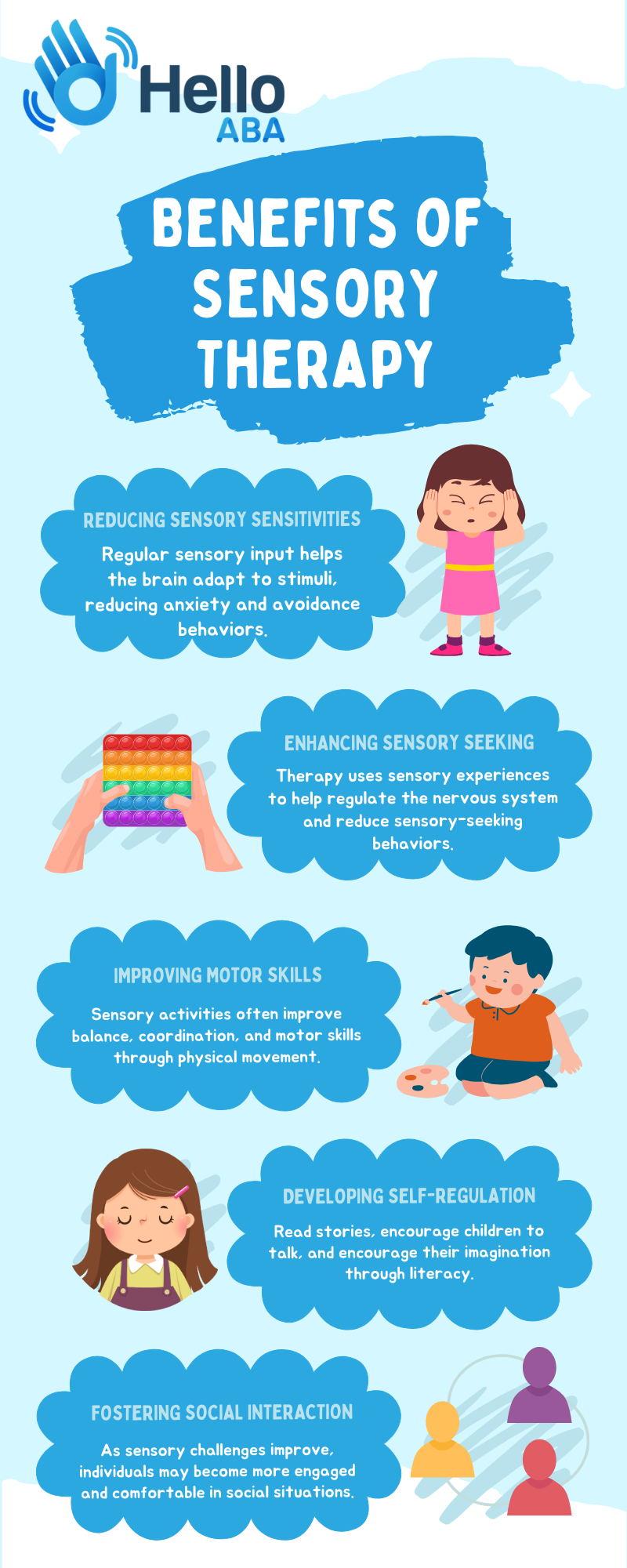Sensory processing disorder (SPD) is a common co-occurring condition in individuals with autism spectrum disorder (ASD). It affects how the brain interprets sensory information, leading to challenges with touch, sight, sound, smell, taste, movement, and body position. Sensory therapy, a specialized form of occupational therapy, offers a therapeutic approach to address these sensory processing difficulties.
Understanding Sensory Processing Disorder
Individuals with SPD may experience sensory overload or under-responsivity. This can manifest in various ways, such as:
- Hypersensitivity: Overreaction to sensory input, leading to avoidance of certain stimuli (e.g., loud noises, bright lights, rough textures).
- Hyposensitivity: Under-responsiveness to sensory input, resulting in seeking out sensory experiences (e.g., mouth exploration, constant movement).
- Sensory seeking: A craving for sensory input to regulate the nervous system (e.g., jumping, spinning, heavy work).
These sensory challenges can significantly impact daily life, causing anxiety, frustration, and difficulties with social interactions, learning, and self-care.
The Role of Sensory Therapy
Sensory therapy aims to help individuals with SPD develop better sensory processing skills. It involves a variety of activities and techniques designed to:
- Provide sensory input: Therapists offer controlled sensory experiences to help the brain organize and interpret information.
- Create a sensory diet: This personalized plan incorporates sensory activities into daily routines to regulate the nervous system.
- Modify the environment: Therapists recommend adjustments to home, school, or community settings to reduce sensory overload and enhance comfort.
Sensory therapy sessions often include play-based activities that engage multiple senses. These activities may involve swinging, bouncing, climbing, using sensory tools (e.g., weighted blankets, vibration equipment), and exploring different textures and sounds.
Benefits of Sensory Therapy
Sensory therapy can significantly improve the lives of individuals with autism by:

Finding a Qualified Therapist
It is crucial to find an occupational therapist with specialized training in sensory integration therapy. They will conduct a comprehensive evaluation to identify specific sensory needs and develop an individualized treatment plan. Collaboration between the therapist, parents, and educators is essential for optimal outcomes.
Sensory therapy is a valuable component of autism treatment. By addressing sensory processing challenges, it can significantly enhance quality of life, promote independence, and support overall development.
Hello ABA is committed to delivering high-quality, compassionate care that makes a real difference. Our ABA therapy in Maryland provides expert sensory therapy tailored to meet each individual’s unique needs. Want to discover how our services can support your journey? Contact us today to get started.
Sources:
- https://www.verywellhealth.com/sensory-integration-therapy-and-autism-260509#:~:text=It%20involves%20specific%20sensory%20activities,behavior%2C%20and%20even%20lowered%20anxiety.
- https://www.autismspeaks.org/science-news/study-finds-sensory-integration-therapy-benefits-children-autism
- https://www.ncbi.nlm.nih.gov/books/NBK581602/#:~:text=Sensory%20integration%20therapy%20is%20a,to%20process%20and%20integrate%20sensation.






